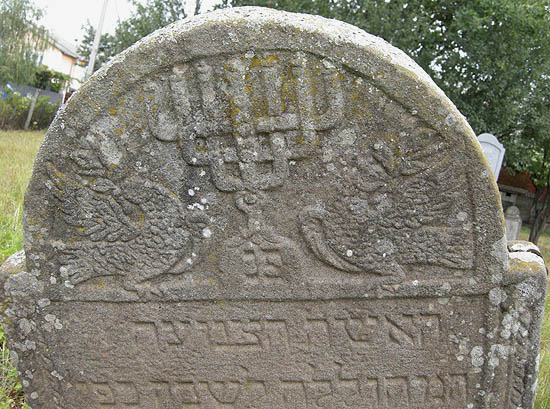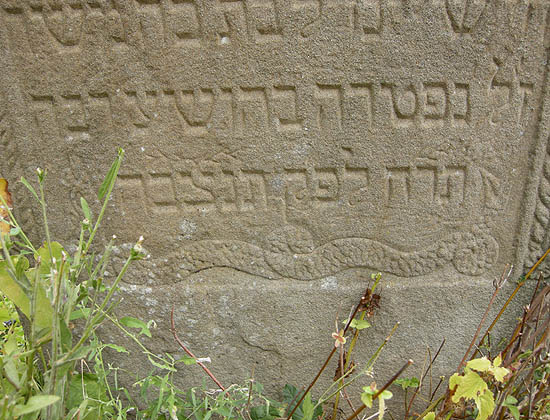 |
| Photo courtesy of riowang.blogspot.com |
By Ruth Ellen Gruber
The elegant and informative riowang blog runs a very nice post -- with lots of photos -- about the Jewish cemetery in Tekovo/Tekehaza in Ukrainian Transcarpathia.
I have already linked to the very detailed and richly illustrated riowang posts about the Jewish cemetery and synagogue in Lesko, Poland - and since the author gave me permission to use his photos, I am re-posting some photos of Tekovo/Tekehaza here.
The post comments in particular on the large number and variety of gravestones marked by candlesticks.
Riowang noted that in Tekovo/Tekehaza
it is worth noting a special gravestone motif, which almost has its own school in the cemetery of Tekeháza: the large and diverse number of geometric candelabra. The presence of candelabra – as we have already seen in the cemetery of Lesko – is not unique in itself. We meet with them almost only on women’s graves, praising the Friday night candle-lighting and, beyond that, the light and warmth of the family home as well as the virtuous woman maintaining it. What is interesting in Tekeháza, however, is the large number and many variations of stylized, geometric candelabra.
The many photographs on the post show candlesticks that are geometric and braided at the same time, as well as some that look like plants:
Once speaking about the candelabra, it’s worth to point out a special local form of this motif. About these gravestone decorations it is difficult to decide whether they are three-branch candelabra or stylized three-leaved plants.
For the stone pictured above, it notes:
On the top, two doves with their heads turned back surround a richly decorated seven-branch candelaber of an intertwined stem. The dove is a symbol of piety, while the candelaber of Friday evening and of the family home. At the bottom of the gravestone a snake is waving. The snake is a relatively rare motif on Jewish graves. In the Jewish cemetery of Warsaw we find an example of the snake biting its own tail, a symbol of eternity, while in the likewise Polish Jewish cemetery of Żabno, the snake attacking the lion on one of the stones represents the death. It is likely that the snake in Tekeháza is somehow related to this latter one.




